
This series will guide you through the steps necessary to inform and inspire the next phase of educational transformation, fueling collective action that spurs more reform. In our first article, Roadmap to Action, we set the stage for understanding our vision, a future of education that is “alive with individual flourishing, community building, skills for meaningful and equitable work, egalitarian governance structures including student agency, and lots of natural beauty and inspiration.”
Now, we will dive into the first set of activities with the goal of creating future scenarios.
 (Photo source: Jaya Ramchandani and Cary Reid)
(Photo source: Jaya Ramchandani and Cary Reid) We’ve developed three activities culminating in multiple scenarios which will be carried forward into the next phase of the roadmap to detail the narrative and narrow down on a scenario.
Activity One: Understanding the Current Landscape
60 min
Every field has its driving forces. In education, this could range from technological advancements to shifts in socio-cultural paradigms. It is important to understand the landscape of your field and environment.
At the end of this process, you will have a better understanding of the current landscape. We recommend using the tool Miro if you are working online, or simply post-it notes if you prefer a manual approach.
With a global class of high school students in mind, we have provided some starting examples.
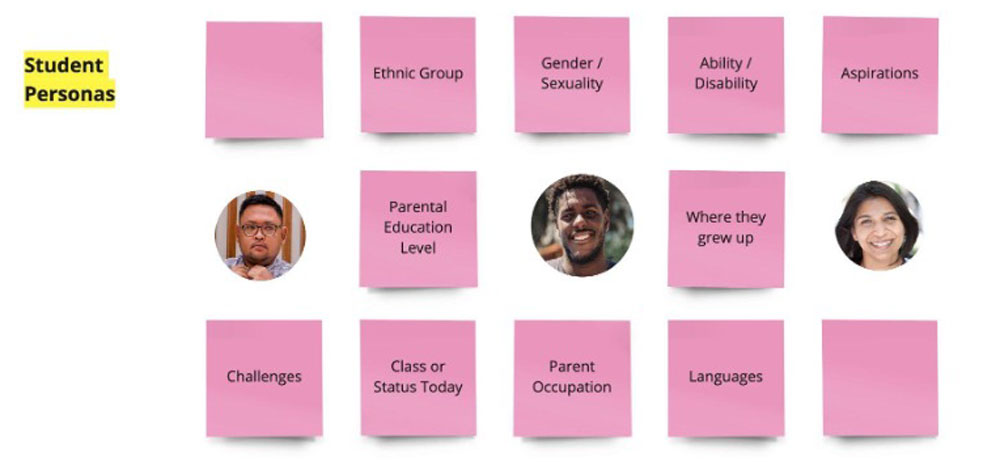
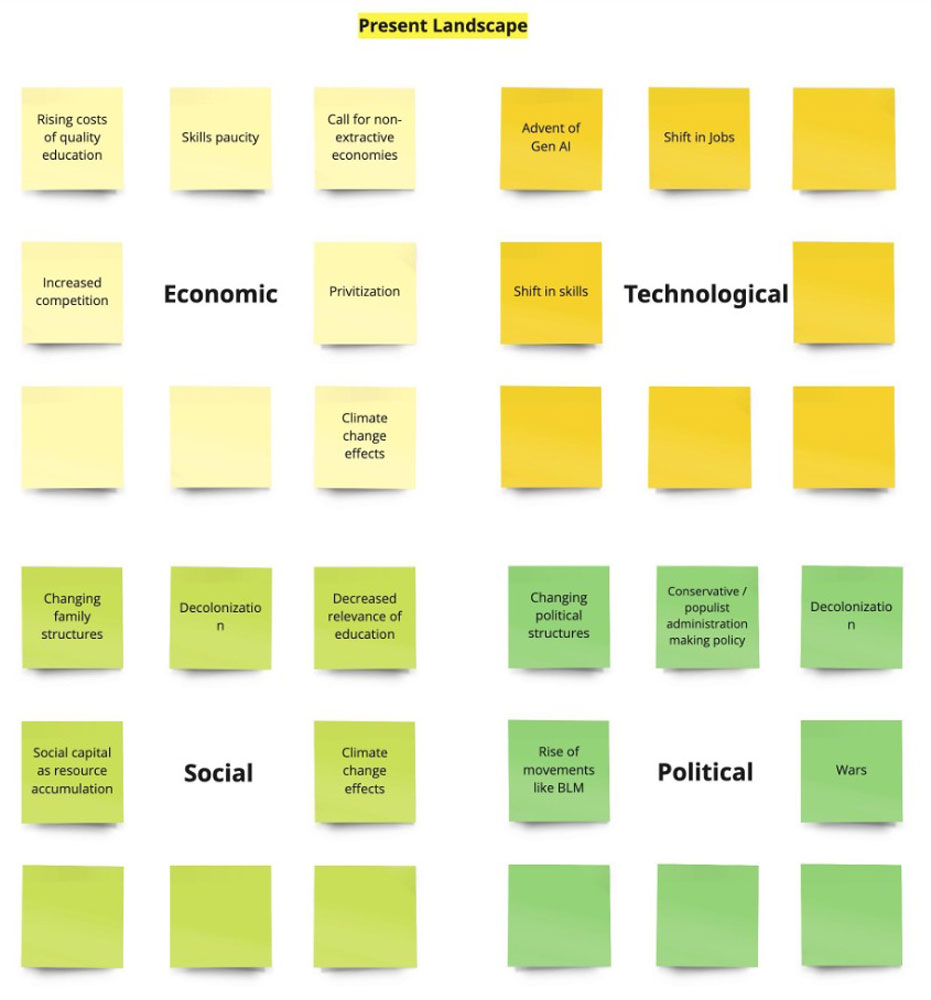
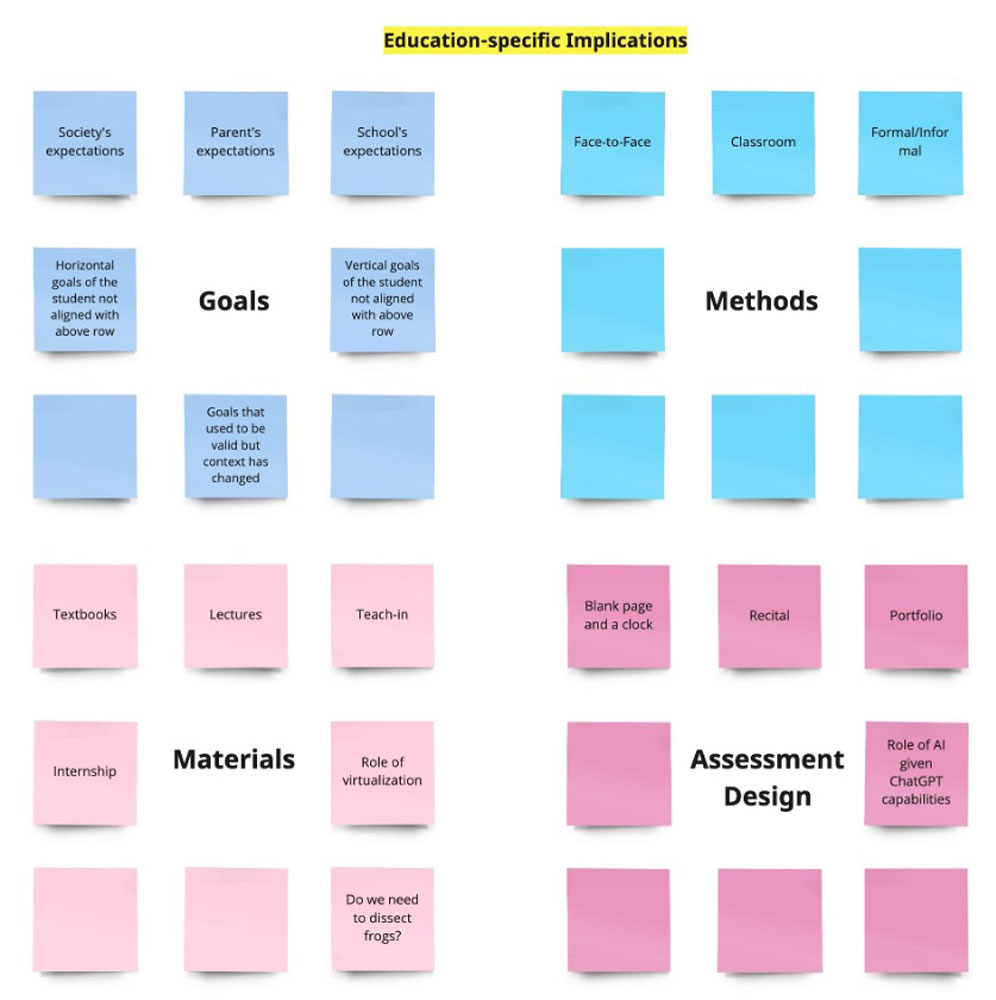
90 min
“Dreaming, after all, is a form of planning.” -Gloria Steinem
In this vision boarding exercise, we dream—a powerful tool for shaping the future of education. We're not just imagining the next steps; we're crafting a vivid tapestry of aspirations that can guide us. This activity is designed to unlock the collective imagination of educators, students, and stakeholders to build a shared dream, leveraging visual and sensory experience.
Consider the following questions to anchor your thoughts:
You can also designate multiple creative zones, encouraging participants to meander and contribute to different vision landscapes. If you are doing this activity online, you can once again use Miro to combine images, sounds, and text, creating a digital collage that represents the multi-dimensionality of your dream.
Here is an example from our positionalities.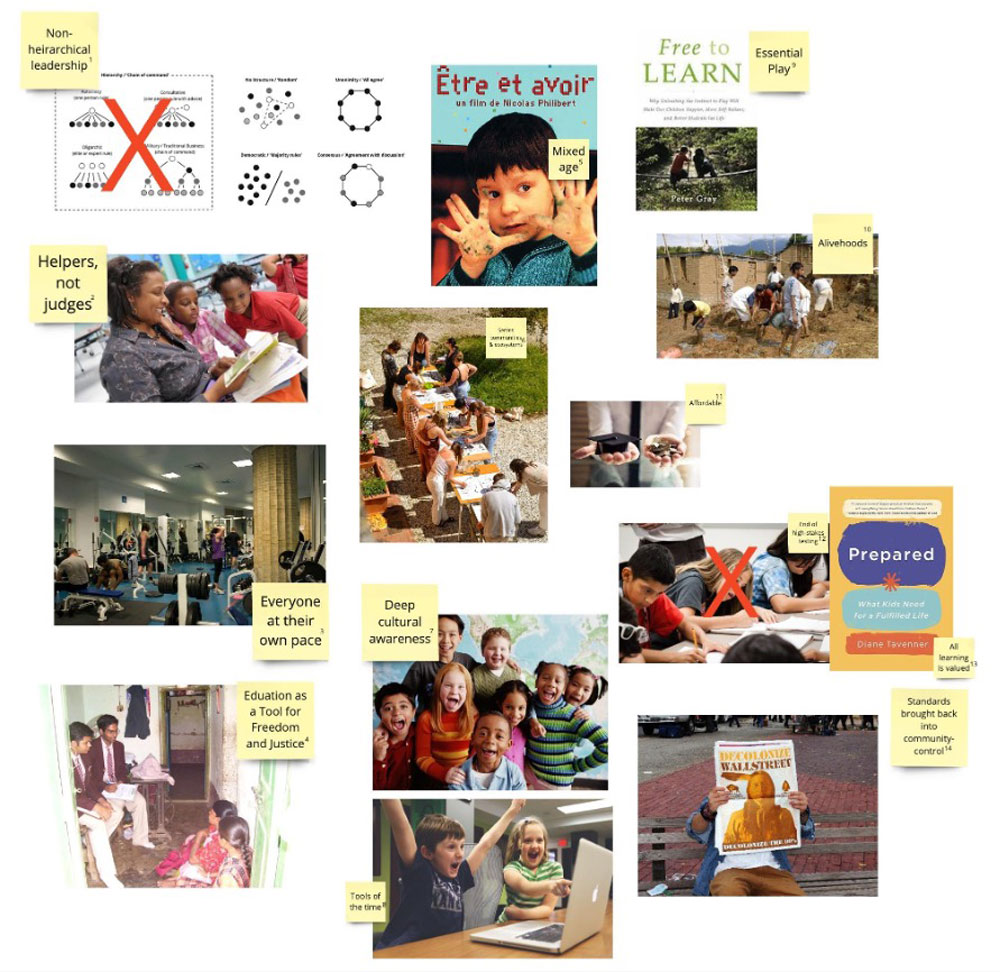
(Photo source: Jaya Ramchandani and Cary Reid)
Activity Three: Designing Future Scenarios
90 min
We recommend that all three activities be done on separate days so as to keep the mind free from the biases linked to the previous activity. We are now ready to design future scenarios. For this, we use the 2x2 methodology. Using the previously identified trends and drivers, pick two significant uncertainties. Place them on a 2x2 grid, giving you four distinct scenarios. Next identify a set of common questions or factors to consider while you populate the outcomes.
Presented below are two examples based on different drivers.
This first example highlights the extent of artificial intelligence collaboration and community participation more broadly. Here, the questions we have addressed across all the scenarios are:
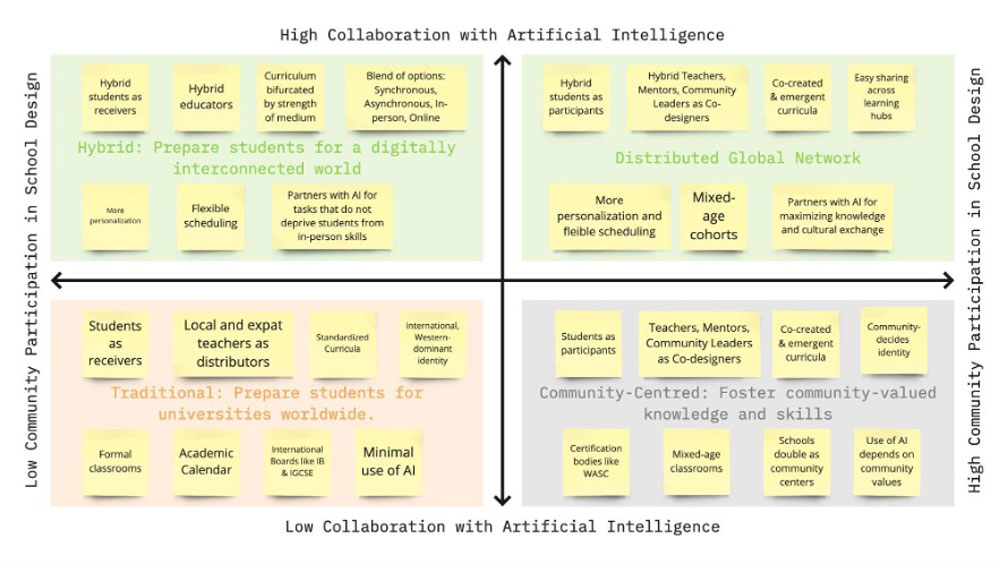
This second example highlights the extent of curriculum standardization and externalization of the assessment process. Here, the factors we have addressed are:
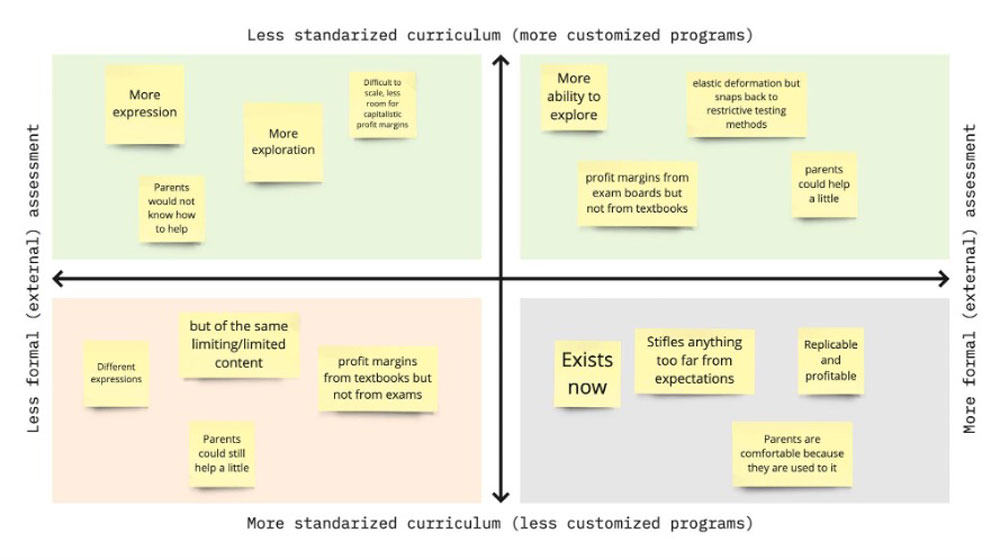 (Photo source: Jaya Ramchandani and Cary Reid)
(Photo source: Jaya Ramchandani and Cary Reid)
Scenarios gain life when shared. In our collaborative projects, we've found that shared knowledge not only educates but also enriches. By sharing your scenarios with stakeholders, peers, and students, you invite critique, insights, and further refinement. You're not just looking for validation but constructive criticism. Feedback will help refine and possibly redirect your narratives.
In the next article, we will jump into detailing, narrowing down on the scenarios, looking back into our history and context, and fleshing out the scenario into a narrative.
References
Learning for Sustainability, Thinking our way into the future – scenarios and visioning, Accessed Oct 1, 2023, https://learningforsustainability.net/scenarios/
Noel, Lesley-Ann, The Conversation Factory, Decolonizing Design Thinking, Accessed Oct 1, 2023, https://theconversationfactory.com/podcast/decolonizing-design-thinking-with-dr-lesley-ann-noel
Rhydderch, Alun. (2017). Scenario Building: The 2x2 Matrix Technique.
Scearce, Diana et al., What If, The Art of Scenario Thinking for Nonprofits, Accessed Oct 1, 2023, https://www.issuelab.org/resources/11620/11620.pdf
--------------------------------------------------------------
Jaya Ramchandani is a Liberia-born, India-raised, international educator. She started her career in publishing helping non-native English speakers from Asia publish in top-tier science journals. She then worked in astronomy outreach and organized a number of informal learning projects, the most ambitious of which was India’s first art-science festival. Moving into formal education, she spent the last few years teaching International Baccalaureate Diploma Program Physics at United World Colleges ISAK in Japan and the United Nations International School in New York, where she currently lives and works as an education consultant and learning experience designer.
LinkedIn: linkedin.com/in/jayar
Cary Reid is a Jamaican educator who has spent the last decade creating alternative systems for schools so that they can support more types of students. He has tried this at high schools and universities in Jamaica, India, Hong Kong, Japan, and Norway. He has also worked on system design in public health, peacekeeping, and diplomacy.
LinkedIn: linkedin.com/in/caryreid